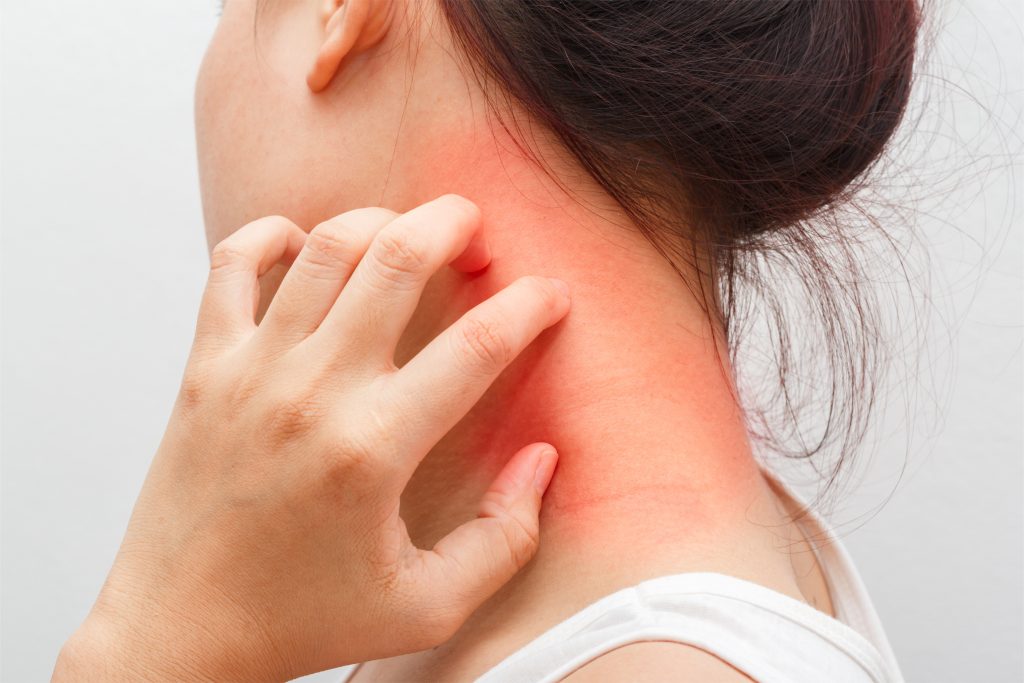The terms dermatitis/eczema are now considered synonymous…
Dermatitis/eczema is an inflammatory reaction of the skin and is the most common dermatological problem. It refers to a skin condition that has many different causes and is classified into two main categories:exogenous and endogenous eczema.
Exogenous eczema is triggered and endogenous originatees from internal processes or genetic predisposition.
The causes of dermatitis vary, but in most cases there is intense redness that is accompanied by itching, has remissions and flare-ups and it can appear in different parts of the body. Often rashes and blisters appear that peel off or have a crust on their surface.
There are different types of dermatitis/eczema:
Atopic Dermatitis (eczema)
Atopic Dermatitis, also known as atopic eczema is an inflammatory skin disease that appears in childhood and can last up to adolescence or adulthood. It is an endogenous eczema with many triggering factors, often coexisting with allergic asthma or rhinoconjunctivitis.
Seborrhoeic Dermatitis
Seborrhoeic Dermatitis is a common inflammatory skin disease that creates whitish plaques in oily areas, such as the scalp or inside the ear. In some cases it appears with or without skin redness. It is an endogenous eczema with flare-ups and remissions.
Irritant Contact Dermatitis
Irritant Contact Dermatitis is a common inflammatory skin disease caused by the contact of many exogenous factors with the skin (e.g. air, dryness, moisture, cold)
Αλλεργική δερματίτιδα εξ επαφής
Η αλλεργική δερματίτιδα εξ επαφής προκαλείται λόγω επαφής του δέρματος με παράγοντες διαφόρων ειδών που δημιουργούν τοπικές αλλεργικές φλεγμονώδεις αντιδράσεις.
Discoid Eczema
It occurs in both children and adults and is often considered to be a continuation of childhood atopic eczema. Eczema lesions are red, round and clearly defined. They are located on the torso or lower limbs and are more persistent than those of atopic eczema. It is treated in the same way, i.e. with good hydration and corticosteroids.



